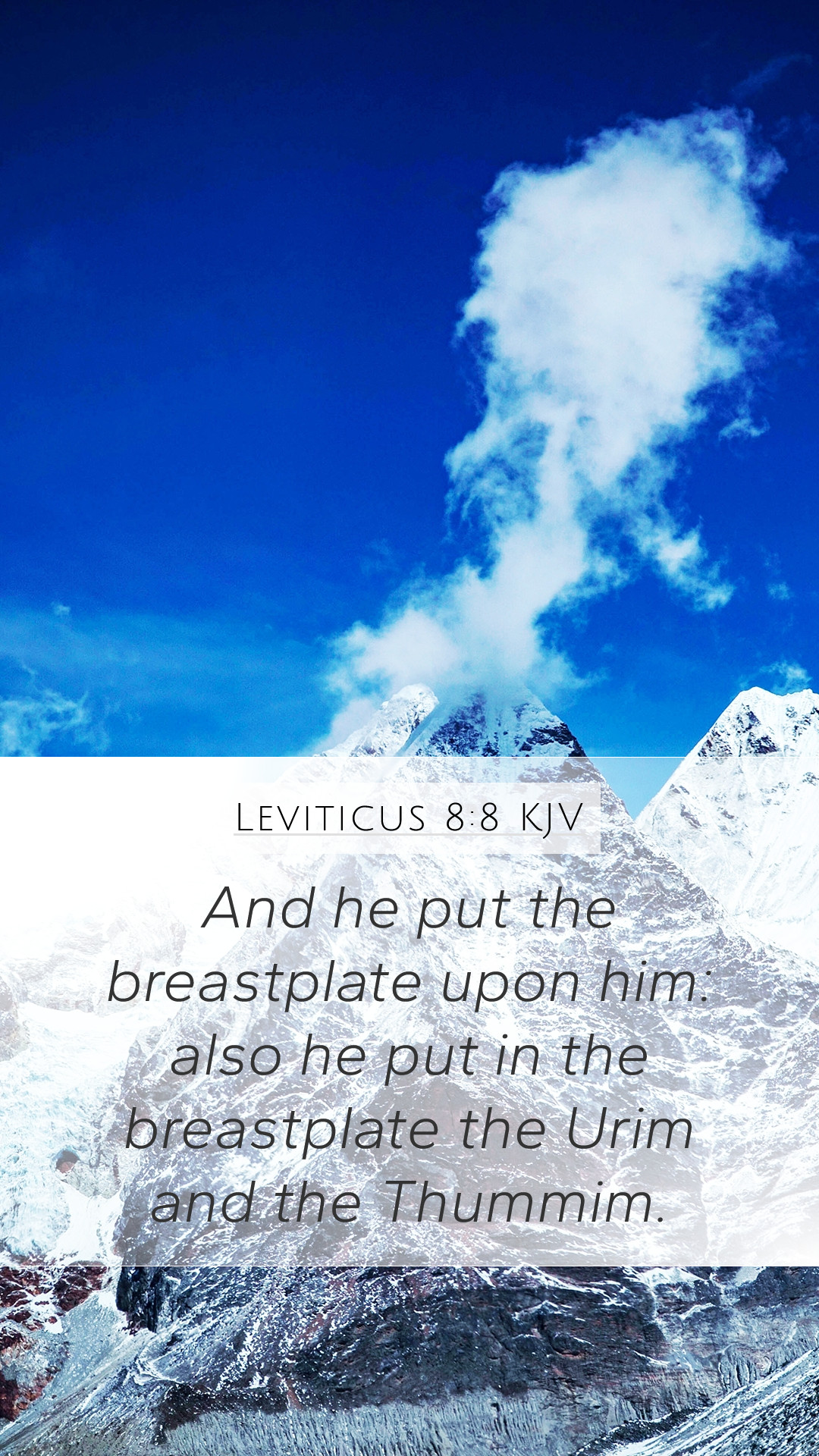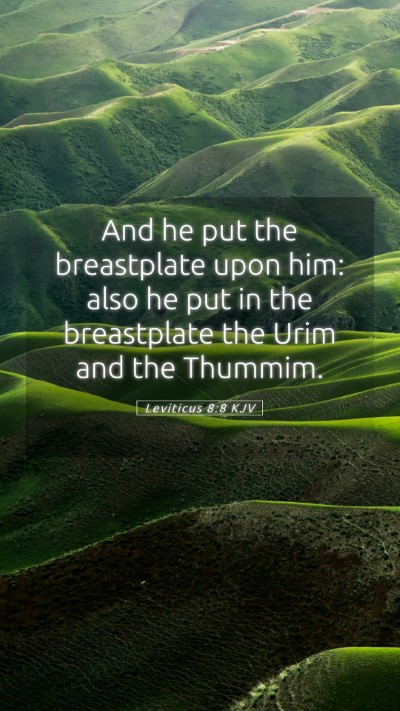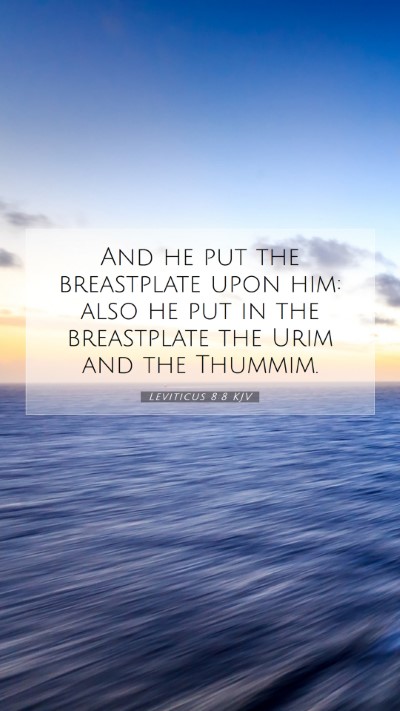Understanding Leviticus 8:8: A Comprehensive Bible Verse Commentary
Leviticus 8:8 states: "And he put the breastplate upon him: also he put in the breastplate the Urim and the Thummim."
This passage forms part of the vital process of consecrating Aaron and his sons as the priests of Israel. To grasp the full essence of this verse, we must delve into its meanings through various public domain commentaries, yielding significant insights into its implications, historical context, and spiritual applications.
Contextual Background
-
Historical Context:
Leviticus is a book primarily focused on the laws and regulations concerning worship and the priesthood. This specific passage details the anointing and sanctification of Aaron, God's chosen high priest.
-
Cultural Significance:
The wearing of the breastplate signifies a direct representation of God's will and direction for the people of Israel.
Commentary Insights
Matthew Henry Commentary:
Matthew Henry explains that the breastplate contained the Urim and Thummim, symbolic tools used for divining God’s will. This indicates that the high priest acted as an intermediary between God and the people, seeking divine guidance in critical matters.
Albert Barnes Commentary:
According to Barnes, the Urim and Thummim likely involved a form of casting lots or sacred stones to ascertain God’s pronouncement. This practice highlights the importance of divine insight and decision-making in the Israelite community.
Adam Clarke Commentary:
Clarke notes that the inclusion of the Urim and Thummim in the breastplate emphasizes the priest's role in revealing God's truth. Their presence indicates that the high priest bore the names of the tribes, carrying the people’s concerns before God while also being charged with the responsibility of imparting divine knowledge.
Theological Implications
The significance of Leviticus 8:8 stems from its demonstration of the priesthood's sacred role. The act of clothing the priest with the breastplate, which contains the Urim and Thummim, symbolizes the weight of the priestly duty to guide the people of God according to His will.
Practical Applications
-
Understanding Divine Guidance:
Believers are reminded of the importance of seeking God's guidance in their lives, much like the high priest did with the Urim and Thummim.
-
Role of Intercession:
Christians can view themselves as priests (1 Peter 2:9) who should intercede on behalf of others, seeking God’s wisdom and direction in a world filled with uncertainty.
Related Cross References
- Exodus 28:30: Further elaboration on the breastplate and its function.
- 1 Samuel 28:6: Indication of how the Urim and Thummim were utilized.
- Hebrews 5:1: The priestly role and its significance in relation to Jesus.
Conclusion: The Message of Leviticus 8:8
In conclusion, Leviticus 8:8 serves as a potent reminder of the seriousness of priestly duties and the necessity for divine guidance in all matters. By understanding this verse through biblical commentary, one can obtain profound insights into the nature of God, His covenant with Israel, and the ongoing applicability of these principles in the modern believer's life.
Further Study Suggestions
For those interested in diving deeper into Bible study insights regarding this passage, engaging with Bible study groups, utilizing Bible study tools, and accessing Bible study resources can enrich one's understanding of scripture. Consider exploring:
- Online Bible study platforms for guided lessons.
- Detailed Bible study guides that cover the priestly duties.
- Courses that focus on the significance of the Old Testament and its applications today.


